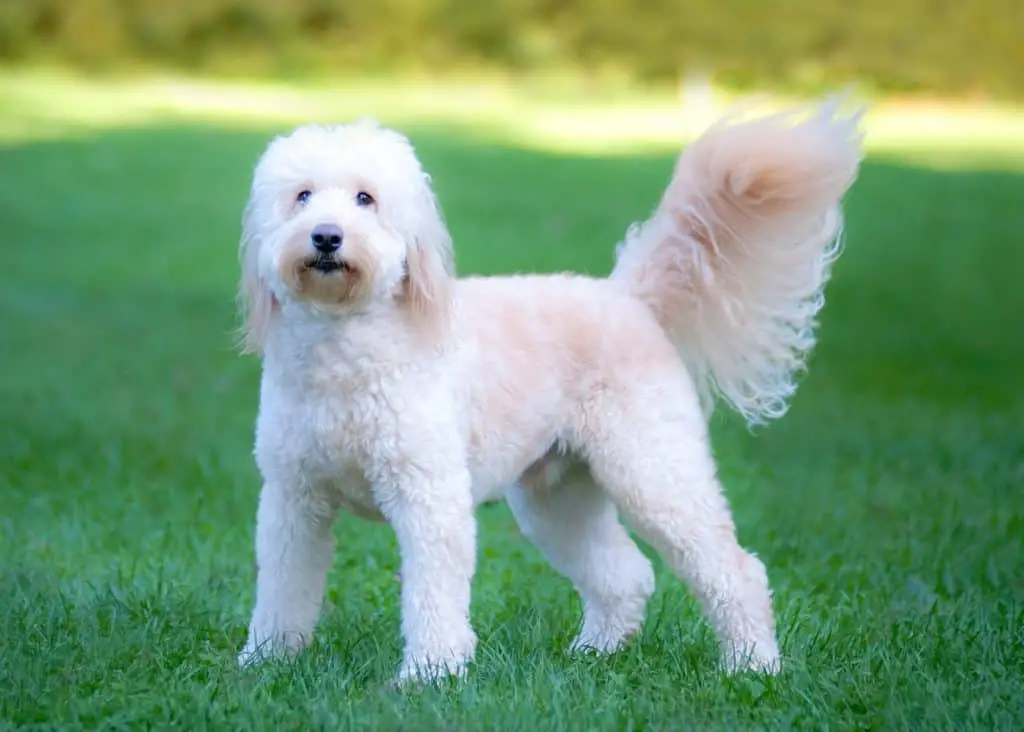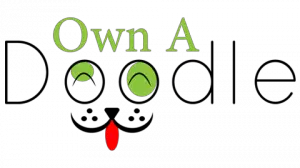As a general rule, Goldendoodles do shed, not as much as other dog breeds, and, on average, not enough to trigger allergies or asthma. Depending on the generation Goldendoodles sport, double-layered coats shed twice in a year – fall and spring – but only mildly.
You’re most likely aware that shedding is a natural process through which dogs get rid of their damaged hair. Although it is an involuntary action, the frequency and quantity of shed vary from one breed and one generation to another.
It depends on breed type and season. Wherein many dogs develop thick coats in winter sheds at the onset of spring. If the Goldendoodle generation is 25% Golden and 75% Poodle, they are less likely to shed.
Understanding Shedding in Goldendoodles
For the Doodle, the fur is like thick outer clothing, and its primary purpose is to protect the delicate skin from being ravaged by heat and other environmental elements.
Controlling body temperature is another essential function of Doodle’s coat. Shedding is directly proportional to hair growth, and the frequency and amount depend upon certain factors, primarily being the breed characteristic.
Health conditions, season, and environment are other factors that can impact the volume of shedding. Sometimes stress can play a role too, but this depends on the temperament of the Doodle.
Heavy shedding, in the case of some breeds, can be completely normal. However, in others, it may be due to an underlying health condition. When a Doodle suffers from excessive shedding, it is time to consult a vet.
Shedding in Goldendoodle Hybrid Vs. Purebreds
Hybrids are the result of controlled cross-breeding between two purebred dogs. Being a hybrid, Goldendoodles come from the adorable poodle and the stately Golden Retriever.
Like all hybrids, these are also treated as “designer dogs” or mixed-breed dogs. The purpose is to capture the best traits of each breed into a single entity.
For example, with Goldendoodles, poodles’ inclusion is because they don’t shed, and that of Golden retrievers is due to their gamely instincts. That being said, there is no guarantee which parents will manifest more in the hybrid.
One of the reasons for creating hybrids was to reduce shedding and come up with a hypoallergenic dog. This experiment succeeded to a certain extent as observation revealed that hybrids tended to shed less than their parents.
Simultaneously, allergists, veterinarians, and researchers confirmed that no dog breed could be strictly non-shedding. One could expect the best outcome in terms of a hypoallergenic dog was
Doodle as it turned out to be low-shedding and hence allergy-friendly.
Shedding in Purebreds
Purebreds are typically known to have descended from specific ancestors, all of which are documented. They closely resemble others of their breed in appearance, way of working, gait, and other characteristics.
The offspring closely resemble each other and their parents through successive generations.
Courtesy of the rigid gene pool, purebreds have a significantly greater risk of developing many hereditary disorders such as bone issues, blindness, skin problems, digestive disorders, heart disease, and so on.
As compared to hybrids, they also shed heavily and require a lot of time for weekly grooming and trimming.

Is Your Doodle Shedding Too Much?
Goldendoodles are classified as being hypoallergenic, but that does not mean that they don’t shed at all. Instead, the degree of shedding depends upon which parent has a strong genetic presence in the Doodle.
Why Is My Goldendoodle Shedding So Much?
The following could be some of the reasons –
- Higher temperatures or sudden fluctuations;
- Health conditions caused due to parasites;
- Unsuitable grooming products or medications;
- Stress – physical, mental, or emotional;
- Excess bathing or incomplete rinsing of soap/conditioner after bath;
Most Goldendoodles start to shed their puppy fur at the age of six and a half to ten months, and in rare cases, the pup could be a late shedder wherein the process occurs at 12 months of age.
Once the puppy fur is shed, the adult coat replaces it and is permanent.
Which Generation of Goldendoodle Sheds The Least?
Unfortunately for breeders, genetics are not as predictable as they would like. F1 Doodles, or first-generation members, are 50% retriever and 50% poodle. But they can inherit features equally from both breeds.
This Doodle can inherit the shedding gene from its Golden retriever parent, shedding anywhere from little to just as much.
F1 – First Generation
F1 is a direct result of breeding a poodle with a golden retriever. Since they are first-generation hybrids, they enjoy improved biological functions due to genetic diversity. The blending of genes leads to a decrease in the health risks that are associated with purebred.
Shedding – The majority of this generation is medium-shedders to heavy-shedders.
F1b – First Generation Backcross
They are still first-generation, obtained by breeding a hybrid back to one of the breeds it originates from. However, the qualities of either the poodle or the retriever can increase/decrease. Chances of a lower shedding litter increase when the breeders manage to cross a poodle back with a doodle.
Shedding – 50% of them are non-shedding (since they inherit non-shedding Poodle traits from both parents), but another 50% of F1b inherit shedding characteristics from the F1 parent. So, the level of shedding is that of an F1 (heavy or low shedding).
F2 – Second Generation
Breeding two F1 Goldendoodles creates second-generation or F2 Doodles. This combination is generally not recommended by reputed breeders since there is a 75% – 80% possibility of shedding.
There is a slight chance that a shedding Retriever gene will unite in puppies because both parents carry Retriever and Poodle genes, letting them shed as much as a purebred Retriever or sometimes more than both parents.
Shedding – 50% would be from moderate to heavy shedding, 25% would be non-shedding, 25% would be fully-shedding, much like a purebred Golden Retriever.
F2b – Second Generation Back-cross
F2b is created when an F1 doodle is cross-bred with an F1b. The F1 parent carries an expected mix of coat traits – both non-shedding and shedding genes – as a first-generation doodle, but the F1b is a mystery.
It becomes essential to test genetic health diseases when both parents are mixed with the same breed ancestry.
Shedding – Depending on what coat genes the F1b parent carries, the puppies can be anywhere from low to heavy shedding, non-shedding, or free as a full-retriever.
F3 and Multigenerational
They are produced by breeding an F1B to an F1B, F1B to an F2B, two F2Bs, an F2 to an F2, or two F3s.. At this stage, characteristics from either breed can be inherited either positively or negatively.
Careful breeding and genetic testing make it possible to weed out disliked features, like shedding, for a 100% full litter of non-shedding pups.
Shedding – It is possible to breed two parents with the potential of zero shedding for a full litter of non-shedding puppies. Even if the breeder does not know the parents’ genetic arrangement, the shedding level can be ascertained by making an educated guess.
How To Help Prevent Goldendoodle from Shedding
Shedding in Goldendoodles is quite simple to manage. Habits with essential DIY grooming can go a long way for pups that are low-frequency shedders.
But do make it a point to check with your vet first if you feel your Doodle might be shedding due to a different issue, such as an underlying skin condition. Discussed as follows are a few tools that can keep your Doodle’s coat in check:
Consistent Brushing – It is recommended to brush your Goldendoodle every week and ensure that –
- A brushing routine is maintained;
- Brush with hard bristles is used so that even the thicker wavy coats of Goldendoodles do not get twisted or tangled;
- The brush is high-quality;
Bathing Best Practices
When you bathe your Doodle, ensure that –
- The shampoo is canine-friendly and mild;
- Shampoos made for alleviating skin conditions are used in case of rashes;
- Bathing is not so frequent to cause depletion of natural oils from their coats;
- Scheduling a bath once a month;
If other obvious shedding triggers are avoided, these norms will help limit shedding to a minimum.
Proper Diet
As a general rule, proper nutrition or altering the diet a bit can prevent excessive shedding. Your Doodle’s coat and skin are a direct reflection of the nutrients that they might be consuming. To this effect, you must –
- Feed your Doodle high-quality food at least 2-3 times a day. Also, include Omega 3 and 6 fatty acids as these benefit both the skin and coat;
- Provide a regular dose of fruits and vegetables to boost the Doodle’s immune system and coat health;
Keep a tab on the Stress Levels
Like humans, Goldendoodles get stressed too. Increased stress triggers an emotional and physical response and can lead to excessive shedding. Such a situation is best tackled by –
- Changing the environment,
- Showering the Doodle with attention;
- Regular outdoor exercise;
If you have just brought your doodle home, perhaps they may be taking time adjusting to their new home. Goldendoodles are remarkably sensitive to these aspects and hence need to be handled with sensitivity.
Finally
Regardless of how much your Doodle sheds, it always pays to know how to handle the problem. Investing in a high-quality deshedder/brush is strongly recommended, and it should be sufficient to last at least a few times during the year.
That being said, do bear in mind that Doodles have sensitive skin that can erupt into rashes at the slightest aggravation. So, whichever product you use or the grooming routine you follow must be tried and tested and err towards moderation.
You can find really great information on Breeding from this breeder.
